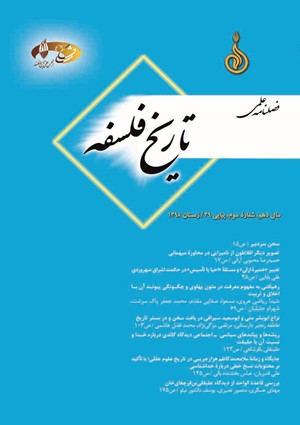-
-
List of Articles
-
Open Access Article
1 - A Different Version of Immortality in Plato’s Symposium
Hamidreza Mahboobi Arani -
Open Access Article
2 - Place and Time of Mullā Muḥammad Kaẓīm Hezārjarībī in the History of Rational Sciences with an Emphasis on the Content of Theological Manuscripts
Ali Ghanbarian Abbas Bakhshande Bali -
Open Access Article
3 - Concept of “Perennial Essence” and the Problem of “Revival or Establishment” in Suhrawardī’s Philosophy
Ali Babaei -
Open Access Article
4 - An Approach to the Concept of Knowledge in Pahlavi Texts and its Connection with Morality and Education
Sheyda Riyazi Heravi Masud Safaei Moghaddm Mohammad Jafar Pakseresht Shahram Jalilian -
Open Access Article
5 - Socio-political Roots and Consequences of Gandhi’s View of God and God’s Relationship with Truth
Ali Naqi Baqershahi -
Open Access Article
6 - Principle of the One in the View of ‘Alī Qulī Ibn Qarachāqāy Khān
Mansour Nasiri Yousef Daneshvar Nilu Mahdi Askari -
Open Access Article
7 - The Discussion between Abū Bishr Mattā and Abū Sa‘īd Sirāfī on Grammar in the Cradle of History
Atefeh Ranjbar Darestani Morteza Mezginejad Mohammad Fazlhashemi -
Open Access Article
8 - Editor's Notes
Hossein Kalbasi Ashtari
-
The rights to this website are owned by the Raimag Press Management System.
Copyright © 2017-2025







